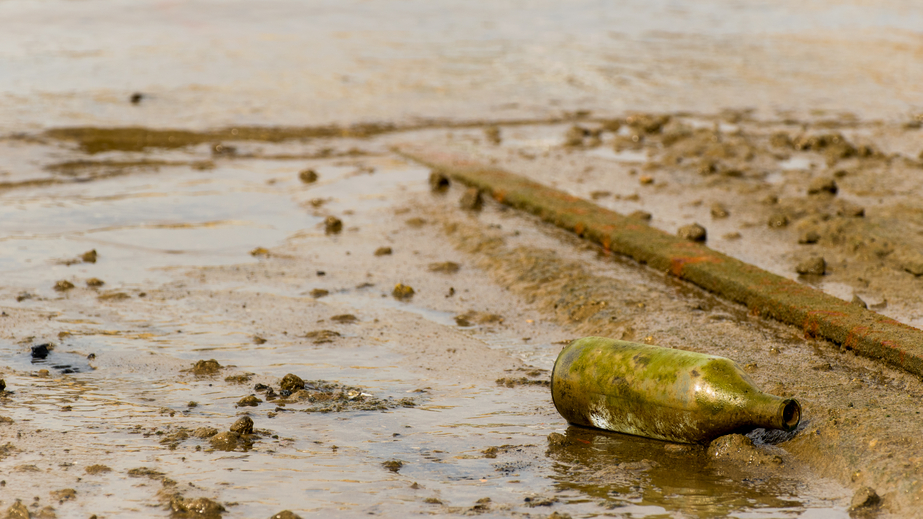Environmental and Ethics 12 PDH Discount Package
Ethics Guidelines for Professional Conduct (LE2-013)
Guidelines for C&D Debris Removal and Recycling (C03-026)
Lead-Based Paint Renovation, Repair and Painting Compliance (C03-032)

This online engineering PDH course describes these methods, and, for each method, answers six questions in a concise and accurate manner:
-
What is it?
-
How does it work?
-
How long will it take?
-
Is it safe?
-
How might it affect the public?
-
Why use it?
EPA's Technology Innovation and Field Services Division has developed a set of twenty-two guides summarizing cleanup methods used at Superfund and other sites.
This 4 PDH online course is intended for civil, construction, environmental, and geotechnical engineers, and is especially useful for Remedial Project Managers and Community Involvement Coordinators who must explain complicated treatment technologies to the lay public.
This PE continuing education course is intended to provide you with the following specific knowledge and skills:
- Learning the goals of activated carbon treatment
- Learning about air stripping
- Being introduced to capping
- Learning about the proper techniques of ecological revitalization
- Understanding the principles of evapotranspiration covers
- Understanding the need for excavation of contaminated soil
- Becoming familiar with the process of fracturing for site cleanup
- Learning the goals of greener cleanups
- Selecting incineration when appropriate
- Deciding when to apply in situ chemical oxidation
- Learning about in situ chemical reduction
- Being introduced to in situ thermal treatment
- Learning about the proper techniques of monitored natural attenuation
- Understanding the principles of permeable reactive barriers
- Understanding the need for phytoremediation
- Becoming familiar with the process of pump and treat
- Learning the goals of soil vapor extraction and air sparging
- Selecting solidification and stabilization when appropriate
- Being introduced to thermal desorption
- Deciding when to apply vapor intrusion mitigation
- Learning about vertical engineered barriers
In this professional engineering CEU course, you need to review the course document which is based on a compilation of the EPA's Technology Innovation and Field Services Division's "A Citizen's Guide Series to Cleanup Technologies", (http://cluin.org/products/citguide) published in 2012.
Upon successful completion of the quiz, print your Certificate of Completion instantly. (Note: if you are paying by check or money order, you will be able to print it after we receive your payment.) For your convenience, we will also email it to you. Please note that you can log in to your account at any time to access and print your Certificate of Completion.

This online engineering PDH course presents ethics guidelines for engineers. The guidelines have been developed for everyday use by engineers as they encounter common situations in their jobs. The course is based on an ASCE document adapted from a standards-of-business-conduct document developed by a private company. Thus the course is useful not only to civil engineers but also to engineers in other fields.
This 2 PDH online course is intended for all engineers who are interested in gaining a better understanding about how to protect and respect their engineering profession in the utmost manner.
This PE continuing education course is intended to provide you with the following specific knowledge and skills:
-
Understanding precise definitions of key terms such as "conflict of interest", "whistleblowing" and "confidential and proprietary information"
-
Understanding the fifteen guidelines for professional conduct, including for example relations to clients, obligations to the public, outside employment, bribes and kickbacks, gifts, and harassment
-
Understanding the ethical decision-making process based on 1) policies (of the employer or other relevant organization), 2) the law, 3) universally recognized values, and 4) the engineer's personal values
In this online engineering PDH course, you need to review the course document "Ethics Guidelines for Professional Conduct" published by the American Society of Civil Engineers (ASCE) on January 2008. This course document is reproduced by permission of the ASCE (www.asce.org), and may be downloaded from the ASCE's website by clicking on Ethics Guidelines for Professional Conduct, or by clicking on the link below.
Once you complete your course review, you need to take a multiple-choice quiz consisting of fifteen (15) questions to earn 2 PDH credits. The quiz will be based on this ASCE publication.
Upon successful completion of the quiz, print your Certificate of Completion instantly. (Note: if you are paying by check or money order, you will be able to print it after we receive your payment.) For your convenience, we will also email it to you. Please note that you can log in to your account at any time to access and print your Certificate of Completion.

This online engineering PDH course describes the required procedures to be followed when generating, storing, transporting, or disposing of hazardous waste. This course also provides guidelines on how to keep it out of landfills by reducing its volume, reusing it, and recycling it. Several successful case studies of recycling demolition materials are presented.
Any company involved with building-construction, demolition, or renovation creates construction and demolition (C&D) debris. This debris can consist of three types of waste: (1) inert or non-hazardous waste; (2) hazardous waste as regulated by the U.S. Environmental Protection Agency (EPA) under the Resource Conservation and Recovery Act (RCRA); and (3) items that contain hazardous components that might be regulated by some states.
This 3 PDH online course is intended primarily for civil, environmental and structural engineers as well as construction personnel and facility managers who are interested in gaining a better understanding of the EPA guidelines revolving around handling construction and demolition waste.
This PE continuing education course is intended to provide you with the following specific knowledge and skills:
-
Federal definition of hazardous waste
-
Resource Conservation and Recovery Act (RCRA)
-
The three categories of hazardous waste generators
-
The four lists of hazardous wastes
-
The four characteristics of hazardous wastes
-
Hazardous waste codes
-
Typical RCRA wastes in C&D debris
-
Managing C&D debris containing mercury, lead, and asbestos
-
Hazardous waste requirements checklist for construction
-
Life cycle of a typical renovation/construction waste
-
Methods for reducing the amount of waste generated
-
Managing oil and tires waste
-
Other environmental laws affecting the construction industry
-
Reduction, reuse, and recycling of C&D materials: ideas and examples
-
Benefits to C&D recycling
-
Using recycled industrial materials in buildings
-
Case study of a successful brownfield C&D waste reduction project
In this professional engineering CEU course, you need to review a compilation of four EPA Green Building documents: "RCRA in Focus: Construction", "Demolition, and Renovation", "Recover Your Resources", "Using Recycled Industrial Materials in Buildings", and "Recycling at Automotive Site Spurs Revitalization" .
Upon successful completion of the quiz, print your Certificate of Completion instantly. (Note: if you are paying by check or money order, you will be able to print it after we receive your payment.) For your convenience, we will also email it to you. Please note that you can log in to your account at any time to access and print your Certificate of Completion.

This online engineering PDH course describes how compliance with the rule can be achieved through pre-renovation education, employee training, renovator certification, firm certification, and proper work practices. EPA compliance monitoring and enforcement are also discussed.
EPA's 2008 Lead-Based Paint Renovation, Repair and Painting Program Rule is aimed at protecting against lead-based paint hazards in older homes and child-occupied facilities.
This 3 PDH online course is intended for engineers responsible for the planning, design and construction management of renovation and/or demolition projects involving lead-based paint in older homes or child-occupied facilities.
This PE continuing education course is intended to provide you with the following specific knowledge and skills:
- Understanding the definition of renovation as stated by the Lead-Based Paint Renovation, Repair and Painting program rule
- Knowing the types of buildings covered by the program
- Learning about the pre-renovation education requirements
- Understanding the need for employee training conducted by certified renovator
- Learning about the responsibilities of a certified firm vs. a certified renovator
- Learning about the record-keeping requirements
- Understanding lead-safe work practices
- Understanding EPA's compliance monitoring and enforcement action
In this professional engineering CEU course, you need to review the EPA publication titled, "Small Entity Compliance Guide to Renovate Right", dated September 2011.
Upon successful completion of the quiz, print your Certificate of Completion instantly. (Note: if you are paying by check or money order, you will be able to print it after we receive your payment.) For your convenience, we will also email it to you. Please note that you can log in to your account at any time to access and print your Certificate of Completion.